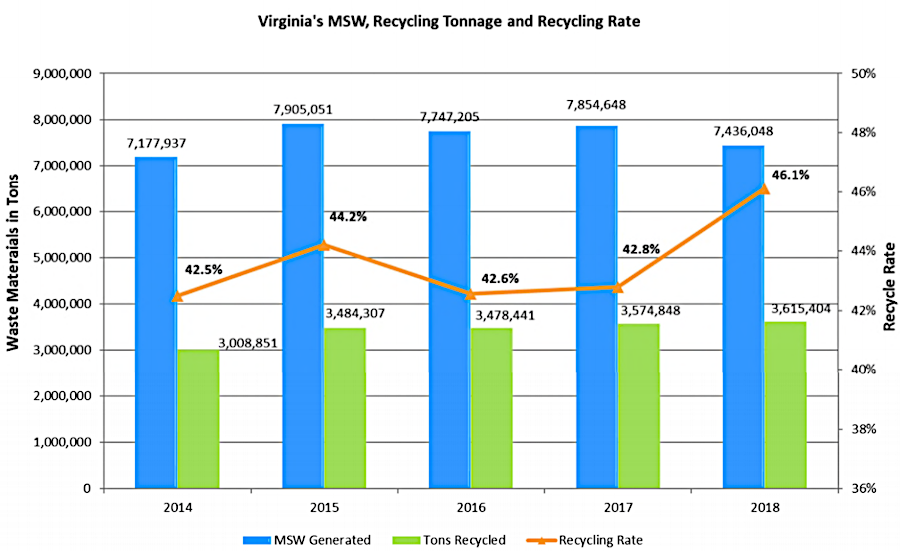
less than half of the municipal solid waste generated in Virginia is recycled
Source: Virginia Department of Environmental Quality (DEQ), Recycling in Virginia: An Evaluation of Recycling Rates and Recommendations (Chart 1)

less than half of the municipal solid waste generated in Virginia is recycled
Source: Virginia Department of Environmental Quality (DEQ), Recycling in Virginia: An Evaluation of Recycling Rates and Recommendations (Chart 1)
The first waste pits in Virginia are the quarries where Native Americans extracted chunks of jasper and flint, hauling way "pre-forms" that would later be chipped to create smaller stone tools. Detritus accumulated at campsites and other location where flakes of stone were chipped away to create sharp-edged points, or to resharpen points after use. Hunters may have stopped at almost any location to rest and enhance their toolkit, though ridges and hills with attractive vistas would have been visited most often. Tiny bits of stone litter may be scattered across Virginia, more numerous than even the plastic litter of today.
The first recycling in Virginia also was practiced by Native Americans. When stone spearpoints became dull from use, they were resharpened by skilled knappers. They used percussion and pressure to create new edges that would be sharp enough to cut through animal skin and flesh. Broken points were reworked into knives and scrapers, or into smaller points for hunting smaller game. In the process, knappers generated more waste flakes.
Archeologists treasure the discovery of sites with flakes, known now as "lithic scatter." Those sites help identify where people lived and how they traveled in prehistoric times. Discovery of a lithic scatter along Route 3, at Brook Run in Culpeper County, revealed the presence of a jasper quarry which had been worked in the Early Archaic Period until 9,400 years BP (Before Present).1
The largest waste dumps created by the first residents in Virginia are shell middens. Only a tiny percentage of shells from oysters and clams were used to create tools and ornaments. Almost all were discarded near where meals were eaten, creating large mounds of waste over time.
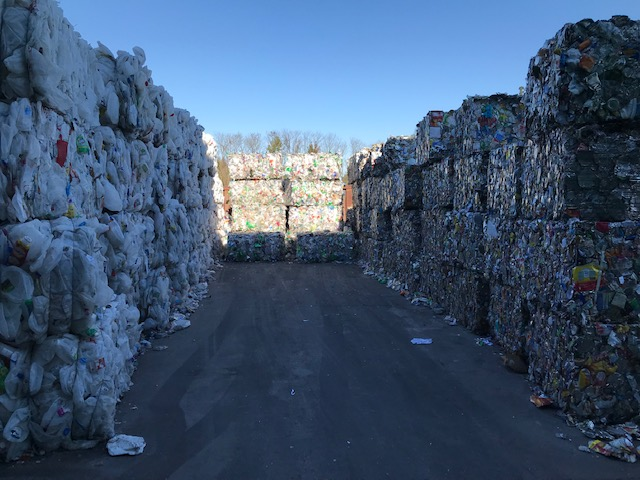
material being recycled in Chester
In modern times, the first municipal dump in the Western world was created in Athens around 500 BCE (Before Common Era). Paper recycling is documented in Japan 1,000 years ago. North America's first paper mill, built in Philadelphia in 1690, used recycled cotton, linen, and used paper as raw materials.
Organized recycling can be traced back to the "ragpickers" in England in the 1700's, as the Industrial Revolution led to the creation of more manufactured materials which could not be re-purposed within individual homes. An example of intentional recycling in North America occurred in 1776. A lead statue of King George III was torn from its pedestal and melted down to create bullets which could be fired at British soldiers.
The first incinerator designed to "destruct" municipal solid waste was developed in Nottingham, England in 1874. In 1885, the first incinerator was operating in New York City. To recover valuable materials from the waste stream, a materials recovery facility was started in New York City in 1897. It included "picking yards" to sort different types of paper, metals, and carpet. Even horse hair was collected and recycled for use in furniture upholstery and plaster.
The use of magnets to sort scrap metals was demonstrated at the 1904 World's Fair in St. Louis. The shortages in World War I led to creation of the Waste Reclamation Service in the Department of Commerce, and national "salvage" campaigns in World War II. A few groups, such as Boy Scout troops, continued to collect used newspapers for cash after the war ended, and individuals collected soda bottles discarded along roads for the $0.02 deposit.
Recycling became a traditional household habit in the 1960's. Oregon mandated a beverage container deposit in 1971, though Virginia has never adopted that technique to reduce waste. In 1987, American consciousness about waste management was raised by the saga of the garbage barge which left New York City, but could find no landfill on the East Coast willing to accept the waste.
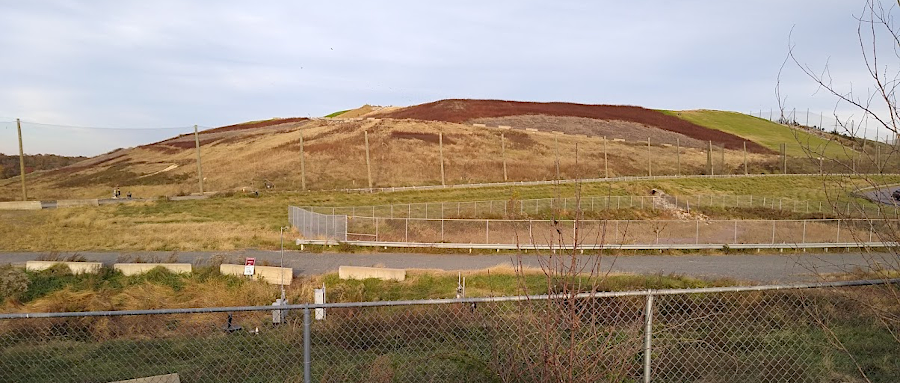
when full, landfill cells are capped with clay and become local hills
Recycling has diverted waste away from landfills, increasing the number of years they could remain open before new cells must be created. Plastic containers are labelled with different numbers, indicating if they had been manufactured with polyethylene terephthalate (PET or PETE - number 1), high density polyethylene (HDPE - number 2), polyvinyl chloride (PVC - number 3), etc. Hazardous materials collection programs have been initiated, along with initiatives to collect and recycle electronic waste as TV's, computers, and smart phones.
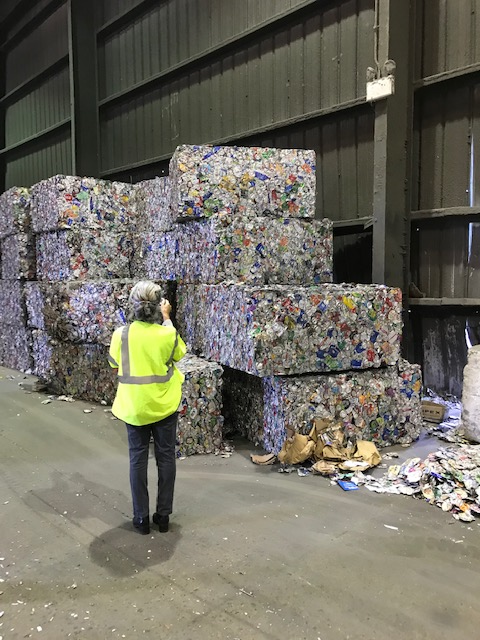
sorted plastics are baled and stored before sale
In 1995, single stream recycling started. It reduced the need for homeowners and businesses to sort waste into paper, metal, plastic, glass, and other categories. Trash collectors could collect just one pile of garbage for the landfill/incinerator and one other separate pile with multiple types of recyclable materials.
Garbage is transported to landfills for permanent burial, or to incinerators followed by permanent burial of ash. Recyclables are taken to material recycling facilities (often described as a "Murf" for multi re-use facility). High-value metals, especially aluminum, are sold to industries in the United States for reuse. Low-value plastics and paper were shipped overseas for reprocessing, especially to China, until foreign countries decided to stop accepting such waste.2
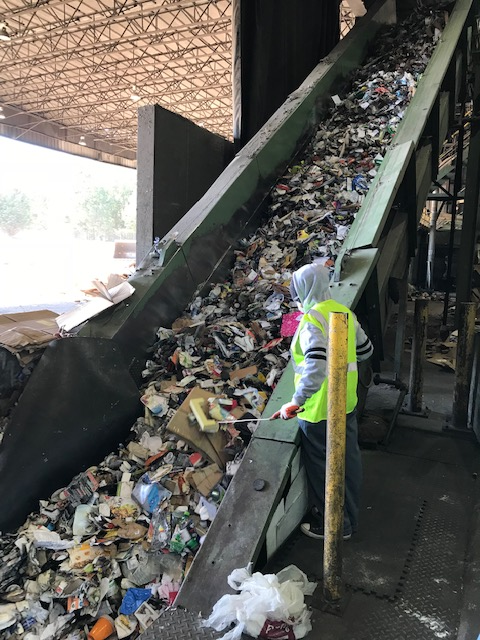
sorting material in Chester at a material recycling facility, separating paper, plastic, glass, and metal
The recycling process was disrupted when China stopped accepting low-value recyclables, the single stream process became too expensive. Landfills were no longer willing to accept glass or plastics other than #1 and #2, because there were too few domestic buyers to offset the collection/transportation cost. Some jurisdictions chose to accept glass, but only if deposited into separate containers.
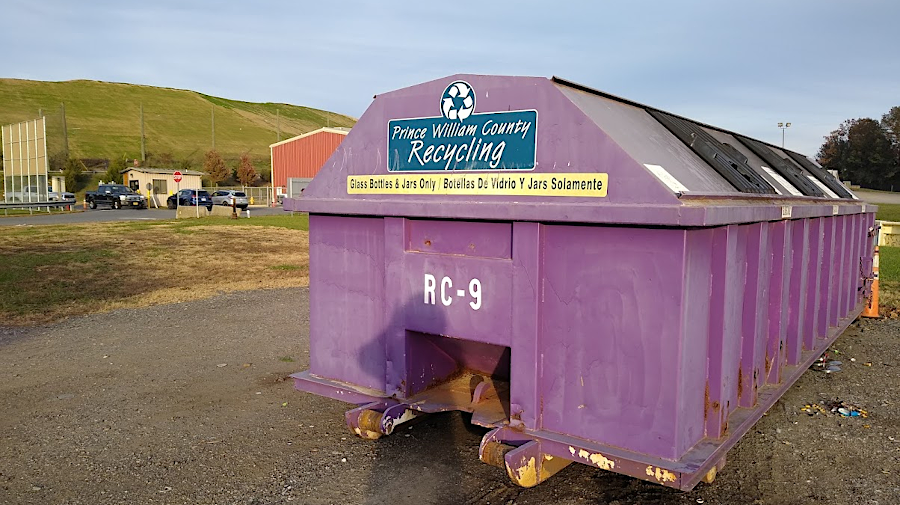
Prince William County agreed to recycle glass, but only if deposited into special purple bins
Construction and Demolition Debris (CDD) can be landfilled like solid waste, but in the United States 75% is recycled. Old asphalt milled from roads getting repaved can be processed and re-applied to new paving projects. Concrete, cinder blocks and bricks can be crushed for reuse as aggregate. Waste wood can be chopped up and recycled as mulch.3
Construction and Demolition Debris facilities are industrial operations with high levels of noise, dust, and truck traffic. Some jurisdictions require special permits before authorizing them even in areas zoned for industrial use.
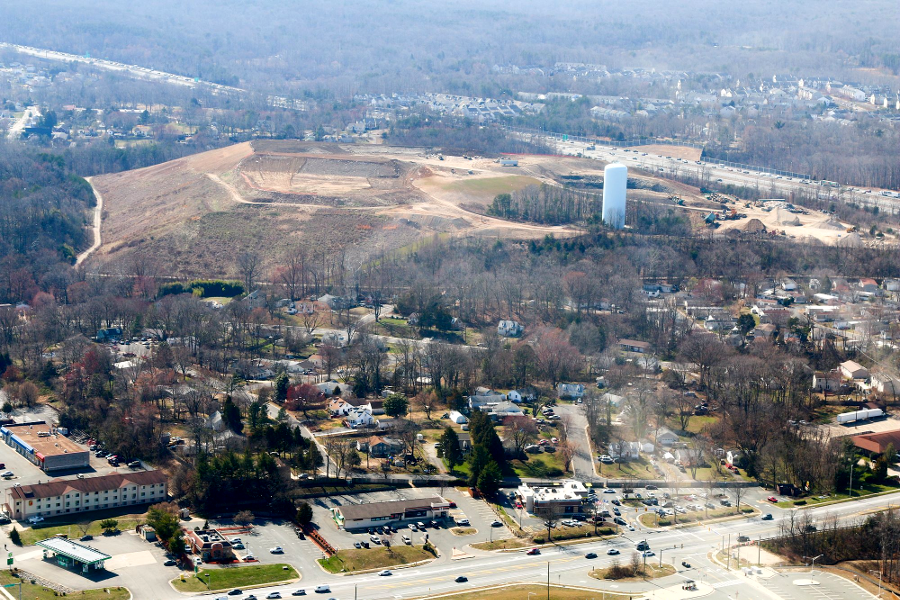
the Potomac Landfill at Dumfries, used for Construction and Demolition Debris, in 2018 before it was converted into a park
Source: Historic Prince William, Dumfries Landfill - #144
In the City of Chesapeake, the Dominion Recycling Center exceeded its permit to process wood waste and started accepting concrete, asphalt and roof shingles. Starting in 2001, the predecessor to the Dominion Recycling Center was authorized to grind, clear and grade debris into mulch.
A new owner in 2019 violated the city permit. Citations from city officials did not end the problem, and in 2023 the city council revoked the permit.
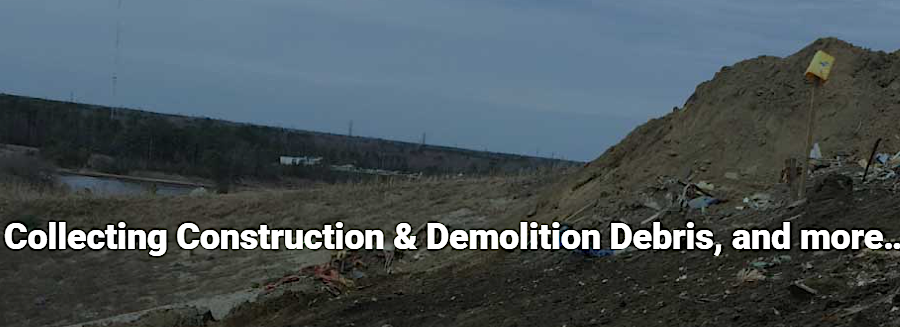
Dominion Recycling Center advertised for delivery of Construction and Demolition Debris - and more...
Source: Dominion Recycling Center
Public pressure for that action came from the Dominion Lakes neighborhood across the street. Supporters of the Dominion Recycling Center, when arguing against the revocation, blamed the city for authorizing development of that neighborhood so close to the industrial area, and for not requiring adequate buffers when authorizing new homes.4
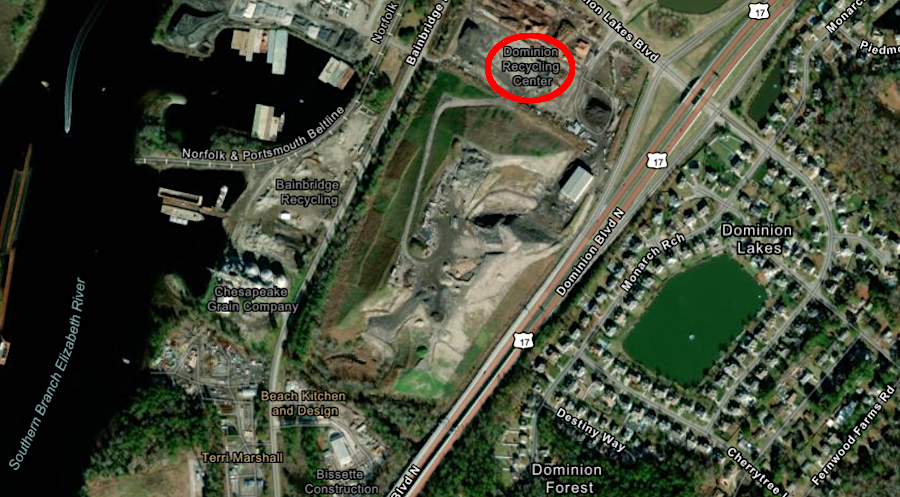
pressure from the Dominion Lakes neighborhood led to the City of Chesapeake revoking the mulching permit of Dominion Recycling Center in 2023
Source: ESRI, ArcGIS Online
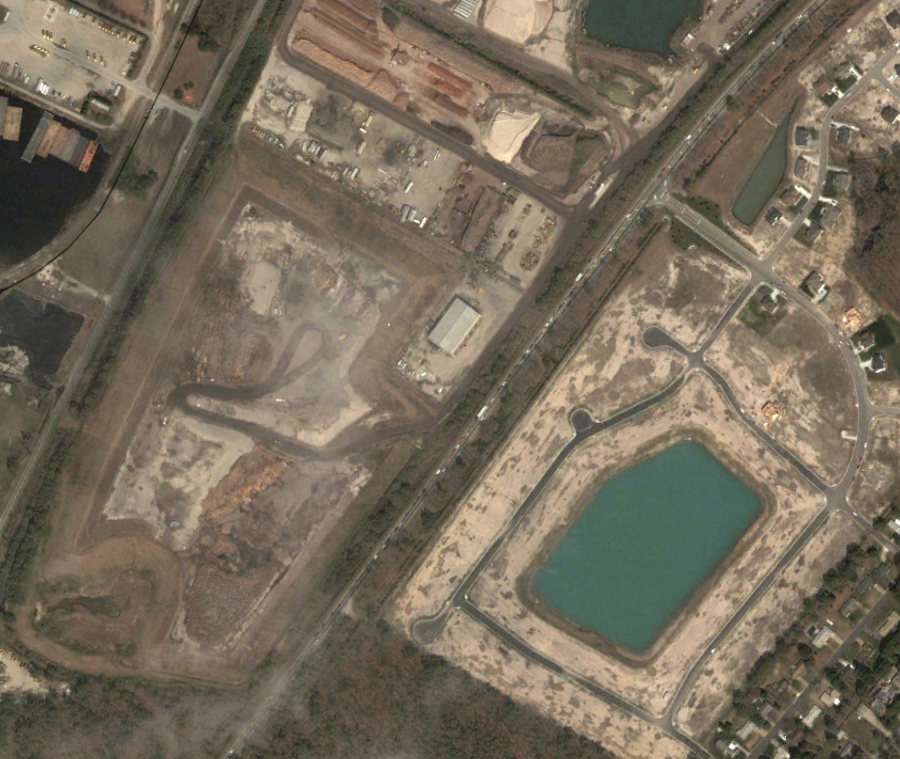
the mulch recycling permit for Dominion Recycling Center was issued before the Dominion Lakes neighborhood was constructed
Source: GoogleEarth (April, 2002)
Recycling centers grind up the plastic first, then separate the particles. The soda bottle plastic (PET) will sink to the bottom in a tank of water. The different types of plastic used in milk jugs (high density polyethylene or HDPE)) and yogurt cups (polypropylene) both float. Advanced techniques are required to move them into separate containers; if mixed together, the resulting product would be too brittle for use.5
The visibility and ubiquity of plastic waste creates a steady opportunity for civic groups to conduct volunteer clean ups. A 2018-22 assessment of waste plastic determined that half could be identified with a commercial brand. Of the branded items, half (25% of the grand total) were from Coca-Cola, PepsiCo, Nestle, Danone, and Altria.6
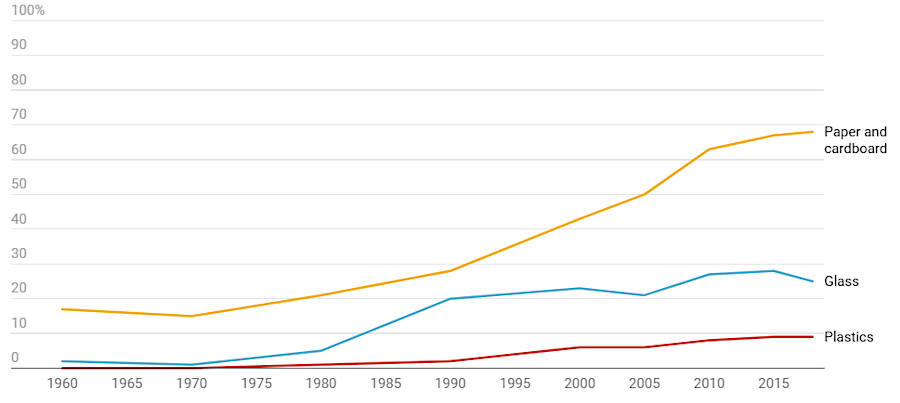
32% of all U.S. municipal solid waste was recycled or composted in 2018
Source: The Conversation, How single-stream recycling works − your choices can make it better ( April 16, 2025)
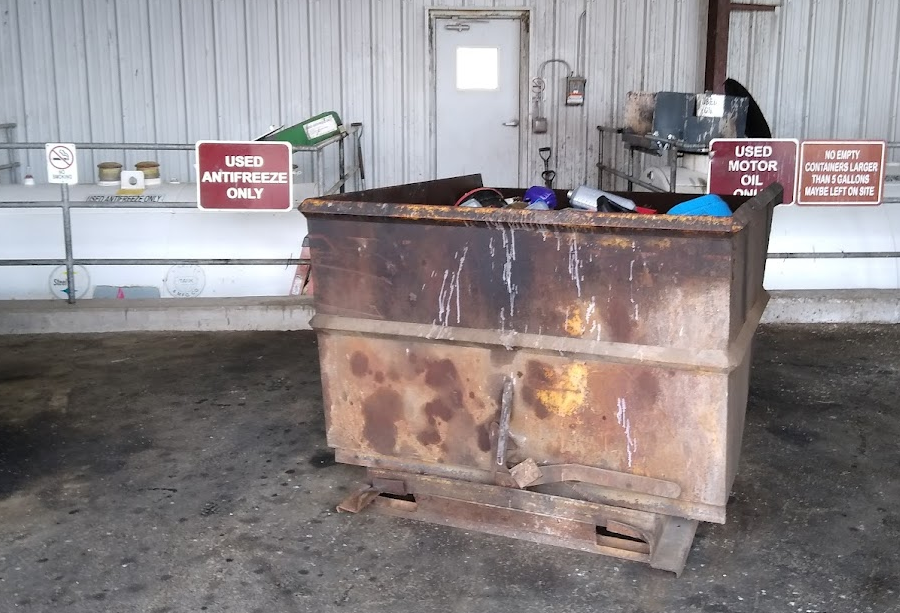
landfills divert liquids, such as motor oil and antifreeze, from burial with municipal solid waste
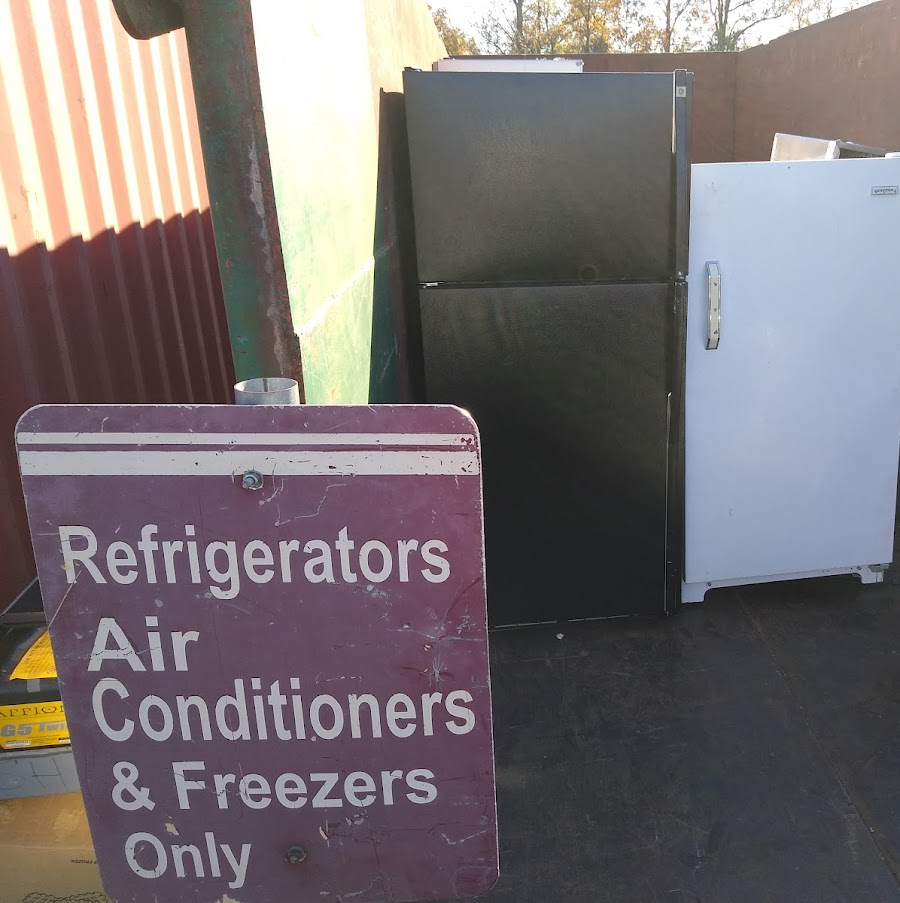
refrigerators, air conditioners and freezers are recycled with special attention to recapturing hydrofluorocarbons, a potent greenhouse gas